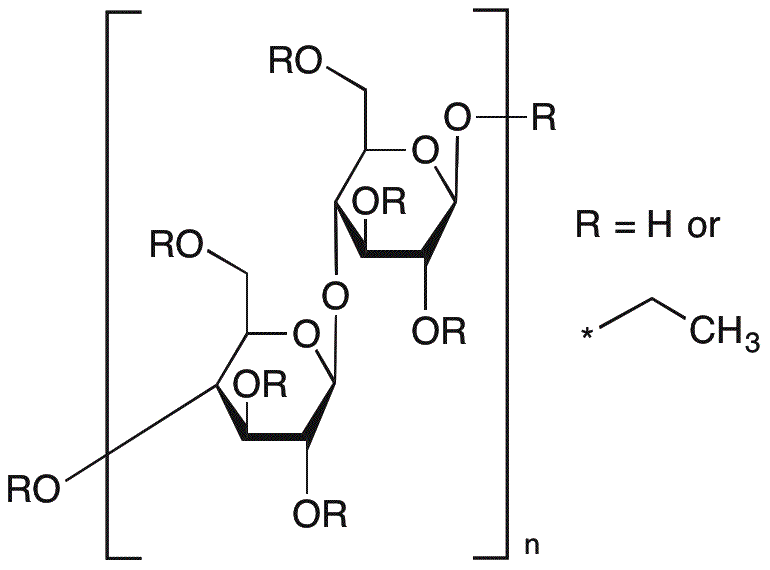Ethyl cellulose is widely utilized in research focused on:
- Pharmaceutical Formulations: It serves as a binder and coating agent in tablets and capsules, enhancing drug stability and controlled release.
- Food Industry: Used as a thickening and emulsifying agent, it improves texture and shelf-life in various food products, making it ideal for sauces and dressings.
- Cosmetics: Employed in lotions and creams, it provides a smooth application and helps stabilize emulsions, ensuring consistent product quality.
- Coatings and Adhesives: Its film-forming properties make it suitable for protective coatings and adhesives, offering durability and resistance to moisture.
- 3D Printing: In additive manufacturing, it acts as a support material, allowing for complex designs while being easy to remove post-printing.
General Information
Properties
Safety and Regulations
Applications
Ethyl cellulose is widely utilized in research focused on:
- Pharmaceutical Formulations: It serves as a binder and coating agent in tablets and capsules, enhancing drug stability and controlled release.
- Food Industry: Used as a thickening and emulsifying agent, it improves texture and shelf-life in various food products, making it ideal for sauces and dressings.
- Cosmetics: Employed in lotions and creams, it provides a smooth application and helps stabilize emulsions, ensuring consistent product quality.
- Coatings and Adhesives: Its film-forming properties make it suitable for protective coatings and adhesives, offering durability and resistance to moisture.
- 3D Printing: In additive manufacturing, it acts as a support material, allowing for complex designs while being easy to remove post-printing.
Documents
Safety Data Sheets (SDS)
The SDS provides comprehensive safety information on handling, storage, and disposal of the product.
Product Specification (PS)
The PS provides a comprehensive breakdown of the product’s properties, including chemical composition, physical state, purity, and storage requirements. It also details acceptable quality ranges and the product's intended applications.
Certificates of Analysis (COA)
Search for Certificates of Analysis (COA) by entering the products Lot Number. Lot and Batch Numbers can be found on a product’s label following the words ‘Lot’ or ‘Batch’.
Numéro de catalogue
Numéro de lot/série
Certificates Of Origin (COO)
This COO confirms the country where the product was manufactured, and also details the materials and components used in it and whether it is derived from natural, synthetic, or other specific sources. This certificate may be required for customs, trade, and regulatory compliance.
Numéro de catalogue
Numéro de lot/série
Safety Data Sheets (SDS)
The SDS provides comprehensive safety information on handling, storage, and disposal of the product.
DownloadProduct Specification (PS)
The PS provides a comprehensive breakdown of the product’s properties, including chemical composition, physical state, purity, and storage requirements. It also details acceptable quality ranges and the product's intended applications.
DownloadCertificates of Analysis (COA)
Search for Certificates of Analysis (COA) by entering the products Lot Number. Lot and Batch Numbers can be found on a product’s label following the words ‘Lot’ or ‘Batch’.
Numéro de catalogue
Numéro de lot/série
Certificates Of Origin (COO)
This COO confirms the country where the product was manufactured, and also details the materials and components used in it and whether it is derived from natural, synthetic, or other specific sources. This certificate may be required for customs, trade, and regulatory compliance.


